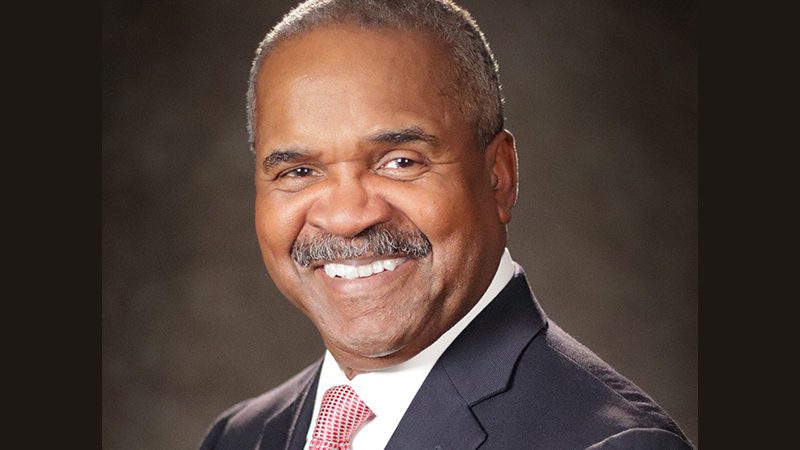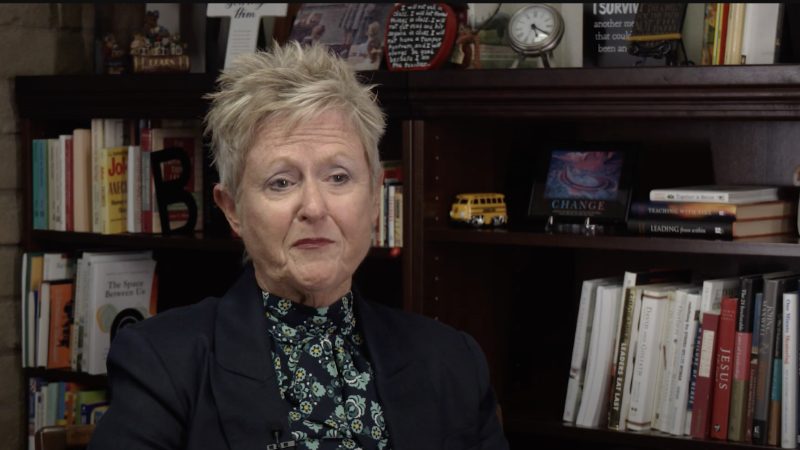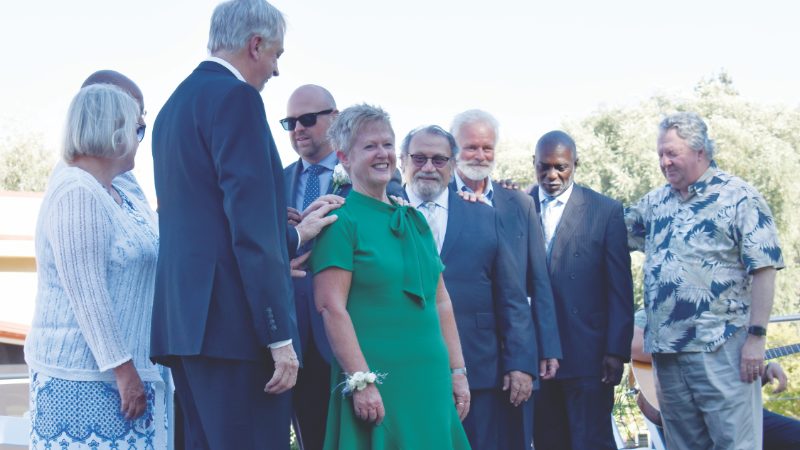Tell me a fact and I’ll learn.
Tell me a truth and I’ll believe.
Tell me a story and it will live in my heart forever.
I heard this on 60 Minutes one Sunday night, and I’ve never forgotten it. Stories are so powerful; many are life changing. In public relations and communication, we often say, “Facts tell; stories sell.” Or “The story is king.” Narratives and personal stories are so much more compelling than mere facts.
Scott Pelley, 60 Minutes correspondent and CBS Evening News anchor from 2011-2017, discussed “Issues vs. Stories” several years ago and said this:
“We think of issues in terms of stories people can relate to. Steven Spielberg didn’t do a movie called the Holocaust—he did Schindler’s List. He didn’t do a project called D-Day—he did Saving Private Ryan. We go out and find a story that makes issues come alive for the audience. So when a producer rushes in and says, ‘Let’s do a story on climate change,’ I say, ‘That’s an issue; tell me the story.’ Don Hewitt the executive producer of 60 Minutes used to say, ‘We aren’t looking for the news of the day, but rather the stories of our time.’”
Tell me the story
I love the hymns in our church hymnal celebrating “the story.” “We’ve a Story to Tell to the Nations,” “Tell Me the Old, Old Story,” “I Love to Tell the Story,” and my personal favorite, “Tell Me the Story.” That’s right—we sing about the story all the time. Why is it difficult sometimes to tell it?
Psalm 107:2 says, “Let the redeemed of the Lord tell their story” (NIV).
The Bible, from the first pages of Genesis through Revelation, has plenty of lessons and concepts and proverbs and amazing facts. But when Jesus came along, He was the God who told stories. Moses delivered the tablets that began with “Thou shalt not,” but Jesus sat down with an expectant crowd gathered around Him and began, “A farmer went out to sow his seed….” He told parables and stories that would stir the hearts of His listeners and stay with them always.
Matthew 24:14 is all about “the story.”
There are many signs that we are nearing the end. But there is only one sign of the end. It’s found in Matthew 24, and it’s about “the story.” The disciples came to Jesus on the Mount of Olives and asked Him, “What shall be the sign of thy coming, and of the end of the world?” (Matthew 24:3, KJV). He answered that there would be “wars and rumours of wars” (verse 6). He said that there would be famines and pestilences and earthquakes, and that many would come in His name and deceive many. But He said that even with all these things that would happen, “the end is not yet” (verse 6). Jesus told them about nation rising against nation and kingdom against kingdom. He warned of all the signs of the end, but He said that there was really only one sign of His coming, and it’s in verse 14:
“And this gospel of the kingdom shall be preached in all the world for a witness unto all nations; and then shall the end come” (KJV).
When this gospel—this story of Jesus—is taken to all the world, as a witness to all nations, then shall the end come, and Jesus will return to take us home. That is why the story, His story, is so important, so vital. I’m encouraged to report that I believe we now have the technology in place to take the story—the saving, life-transforming story of Jesus—to the entire world. Through the internet, through mobile phone technology, through traditional media of radio and television, through social media. And through traditional evangelism. We need every tool—traditional and new—to tell the story.
There are some great storytellers—people who have made it their life’s work to tell “the story.” There are pastors, teachers, and evangelists. And then there are people like me and like you. We desperately long to tell it and to tell it well, but some of us feel a little inadequate when compared to some of the greats. I’ve been blessed to know some terrific storytellers. My parents were dear friends with Josephine Cunnington Edwards (mother of King’s Heralds tenor Bob Edwards), and I devoured every book she wrote. Eric B. Hare was a frequent guest in my Sabbath School class at Sligo church in Maryland when I was just a little girl. I still remember his exciting mission stories and the way he told them. I knew Aunt Sue and Uncle Dan of Your Story Hour—what wonderful storytellers they were. Then there was Paul Harvey, who passed away over a decade ago. He was a dear friend of my family, and while the world knew him as “the most listened-to newsman in America,” I knew him to be a consummate communicator who always told us “the rest of the story.”

But when it comes to great storytellers, I am related to one of the best. My father, George Vandeman, was a wonderful storyteller. His conversion story entitled “I Met a Miracle” still gives me goosebumps when I read it. A few years ago, Pacific Press compiled a collection of his best stories and sermon illustrations into a book called Helpings for the Heart. Over the course of his remarkable ministry, my father used stories to draw people to Christ. He, like Scott Pelley and the late Don Hewitt of 60 Minutes, knew the power of the story. The only difference was that my dad’s storytelling always centered around Christ.
Tell me a fact and I’ll learn
I love to learn facts: little known facts, famous facts and tidbits, dates—I love knowing the dates of historical events. Sometimes I think I missed my calling and should have been a history teacher. I loved history and English in school. I enjoy watching game shows like Jeopardy and, a few years back, Are You Smarter Than a 5th-Grader? Sadly, as I played along I realized that often I am not smarter than a 5th-grader! But that’s OK. It’s fun to play along.
I can tell you every fact and historical date relating to It Is Written and most facts about Voice of Prophecy, Faith For Today, and other media ministries. I pride myself in being quite the expert on the history of broadcasting in our church. For instance, It Is Written was the very first religious television program broadcast in color. (This statistic is actually on a trivia website.) But Faith For Today was our church’s very FIRST television broadcast—May 21, 1950.
Here are some interesting facts about the Pacific Union Conference: We have approximately 220,000 members spread across seven conferences in five states. We have over 800 congregations and 113 schools; La Sierra University and Pacific Union College are in our union. In the conference where I reside (Southern California Conference) churches share the gospel in more than 30 languages and dialects each Sabbath. These are interesting facts. I like learning them. But I don’t just like facts about media ministries and the Pacific Union Conference. I like biblical facts, historical facts, scientific facts—all kinds of facts. So, tell me a fact, and I’ll learn.
Tell me a truth and I’ll believe
We as Seventh-day Adventist Christians are blessed to have the Bible as our only creed, and we hold certain fundamental beliefs or truths to be the teaching of the Bible. There are now 28 of these fundamental beliefs, and I believe every one of them. I can’t name them all right now off the top of my head, but they include the Sabbath, the Nature of Man, the Sanctuary, the Trinity—and then three separate ones for the Father, the Son, and the Holy Spirit. We have Baptism, Stewardship, the Gift of Prophecy, Death and Resurrection, the Second Coming, the New Earth. My two personal favorites happen to be the Sabbath and the Second Coming. I love what we believe about the soon return of Jesus, don’t you? And I love the Sabbath! And the single most significant reason I believe all of these truths is that they are wrapped around the story of Jesus.
So, tell me a truth and I’ll believe.
Tell me a story and it will live in my heart forever
That is what the story of Jesus is all about—it not only stays with us and lives in our hearts, it has the power to transform us and the ability to make us want to share it with others. Back to my father: I used to go to lots of evangelistic meetings as a child and later as an adult. I watched the way my father skillfully unfolded the truths of Scripture by wrapping them around the story of Jesus. He would capture the attention of his audiences with a sermon called “The Heavens are Telling,” sharing slides of the stars. Then in night two or three, he’d tell his own conversion story—about the Friday night he marched out of his own preacher father’s service and shook his fist at the heavens and said, “Holy Spirit leave me and never come back.” Then, once he shared his own personal story, he carefully led the audience night after night through the various truths of Scripture. But always, he began and ended with the story of Jesus. That’s what it was all about then. That’s what it’s all about today!
There are two stories I’d like to share with you. Both will “live in my heart forever.”

The first one is about my brother, Ron Vandeman. He passed away in 2010 at the age of 68. Ever since his complete mental breakdown when he was 21 years old, Ron had to live with the mysterious, often frightening illness of schizophrenia. He was in and out of hospitals, institutions, and various mental health facilities for 40 years of his life. I’ve written about him in the Adventist Review and shared some of the pain his illness brought to our family.
Over the years, I would visit Ron in a variety of different facilities. Sometimes he would be lucid and able to carry on an almost “normal” conversation. Other times he was non-responsive, sometimes hostile, sometimes he was just quiet. We almost never spoke of spiritual things.
At a visit not long before he passed away, I found Ron to be quite talkative and animated. He was delighted that a visiting clergyman had left copies of the Gideon Bible with patients who wanted a copy. Ron asked me if I had read the Gospels.
“Of course,” I answered. “It’s the best part!”
“But have you read Matthew, Mark, Luke, and John in order—starting at Matthew and reading straight through to John?” he asked.
“Well, no,” I admitted. “I can’t remember the last time I read through all four Gospels, especially in one sitting.”
“You should do it,” he insisted. “The story is so simple.”
“And what’s the story?” I asked, almost hesitantly.
“The story is this: Jesus took our pain!” he declared.
“Jesus took our pain,” I repeated, not believing that my brother, who lived in such a state of mental turmoil and pain, could grasp the story and then describe it in just four words: Jesus took our pain. I pointed out to Ron that even our father, a great preacher and evangelist, couldn’t have summed up “the story” as simply and eloquently as Ron just had.
Yes, friend, Jesus did take our pain. He took yours and He took mine. He took my brother’s pain and promised us a day when our pain, our tears, our heartaches, would be no more. If Ron could tell “the story” so beautifully, so simply, surely I could tell it, too. I am committed now more than ever to doing just that.
One more story that will “live in my heart forever.” I heard this on a very hot day in May 2008. My son was graduating from California Lutheran University in Thousand Oaks, California, on the hottest day of the year—108 degrees in the shade. I was concerned that day because my husband, his father, had been quite ill. He had been diagnosed with cancer just five months before and we still didn’t know the extent of his illness—had it spread? Was he a candidate for surgery? What was his treatment plan to be? We didn’t know the answers that day, but he was determined to see his son graduate from college, so he went with me to the giant football field. There was no shade; no breeze; only the hot sun beating down on us all.
As I glanced at the impressive printed program in my hand, my heart sank. There were music and prayers and speeches, and then more speeches, and then, finally, the conferring of degrees on the over 400 undergraduates, as well as all the graduate degrees. A local congresswoman was giving the commencement address. It looked like it was going to be a long afternoon. And while I wouldn’t have missed that day for the world because my son was graduating from college, I now believe we were all there to hear Don Conley’s story.
Don Conley was a 60-year-old man at the time. He was the ADEP speaker—representing all those graduating from the Adult Education Program. As he stood up to speak, he said, “I stand before you today because of a young man I never met.” He went on to tell us about himself, very humbly, in a soft-spoken voice. He said that he had always wanted to go to college but never got around to it. He married right out of high school, had three children in quick succession, and he worked hard to support his family. He had worked in the Information Technology field most of his life. Then, tragedy struck. He was diagnosed with end stage heart failure in 2002. In 2003 he was lying in the hospital at UCLA just waiting for a heart transplant, without which he would surely die. At that same time, a young 17-year-old named Jason died tragically in a car accident. Jason’s parents, in the midst of their overwhelming grief, decided to donate all of his organs. Don Conley received Jason’s heart. Jason’s dream at the time of his death was to graduate from college. Don ended his short speech that hot day in May with these words: “Today, Jason and I graduated from college. I wanted to fulfill the wish of my donor.”
There wasn’t a dry eye on the football field that day. There was silence, then thunderous applause. His story made our day. It made us forget the heat. And it made us forget everything but the powerful spiritual application of his story. His story will always live in my heart.
Friends, may I humbly submit this thought to you: This planet is in end stage soul failure. We have a Donor; His name is Jesus. He has already died so that we may live—eternally! He is not only willing to give us a new heart—a clean heart—but He also wants to give each person life everlasting. That’s His wish for us. He only asks that we “tell the story.” Here’s the story—you know it by heart:
“For God so loved the world, that he gave his only begotten Son, that whosoever believeth in him should not perish, but have everlasting life” (John 3:16, KJV).
Let’s fulfill the wish of our Donor and tell the story, the saving story of Jesus, so that He can take us home. I am determined, now more than ever, to do just that!
_____________________________
Connie Vandeman Jeffery serves as associate director of communication and community engagement for the Pacific Union Conference.






